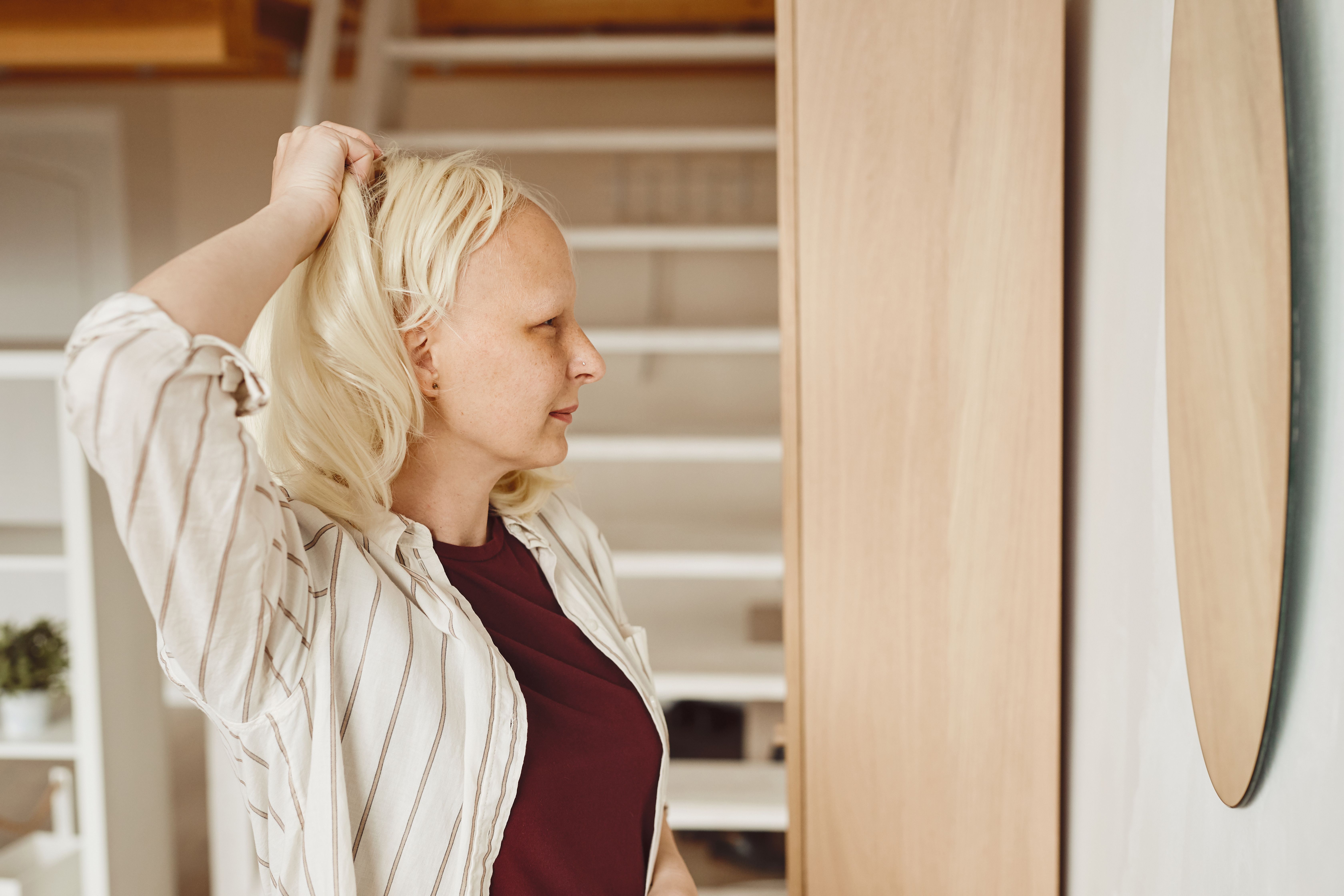- Center on Health Equity & Access
- Clinical
- Health Care Cost
- Health Care Delivery
- Insurance
- Policy
- Technology
- Value-Based Care
Gender Differences, Disease Severity, Income Disparities Drive Financial Burden in AA
Women with alopecia areata (AA), especially those with severe symptoms and lower income, face significant financial burden managing the condition.
Woman removing wig | Image Credit: Seventyfour - stock.adobe.com

Patients with alopecia areata (AA), particularly women, as well as those with severe symptoms and lower-income individuals, experience significant financial strain managing AA treatments and hair regrowth products.
A United Kingdom (UK) online survey completed by 829 participants collected data from May to August 2022 using Qualtrics. Disease duration, hair loss, and quality of life (QoL) were assessed using validated scales. Usage of products and services to manage AA was observed over the preceding 12 months as well as from the time of diagnosis up until the preceding 12 months.
The AA Symptom Impact Scale—Severity Subscale rated the severity of 7 symptoms from 0 (not present) to 10 (as bad as you can imagine) over the preceding week. The AA Patient Priority Outcomes—Hair Loss items measured the current severity of hair loss on the scalp, eyebrows, eyelashes, and body using a 5-point scale from 0 (no hair loss) to 4 (complete hair loss). Overall quality of life (QoL) impacted from products and services were measured from 1 (made things much worse) to 5 (made things much better).
The participants were mostly female (85.9%) and White (92.7%), had an average age of 42.7 years old, and had a median AA diagnosis duration of 10.9 years. Notably, men used fewer products to manage AA compared with women before and during the preceding year, except for hats (49.5% vs 45.4%), vitamins/supplements (38% vs 38.3%), non-prescription shampoos (36.2% vs 37.3%), and other non-prescription scalp treatments (21% vs 20.6%).
Patients with AA over the past year chose, "made things a little better" as the most common response (35.5%), followed by "made no difference" (34.2%) and "made things much better" (20.4%) based on the impact the products and services had. A small portion (10.0%) reported negative impacts.
A median total cost of $1,012.60 over the preceding 12 months was reportedly spent by individuals with AA on products and services to manage the disease. Women had significantly higher average total costs than men ($1,174.94 vs $195.82).
Wigs were the most common expense for women ($884.36), followed by eyebrow and eyelash products ($252.68). For men, private dermatology services were the most expensive ($694.86), though only 14 of 107 participants used them. The median percentage of participants' absolute cost as it relates to income was 3.6% for women and 0.3% for men. The most common strategy to manage expenses was using own savings (about 40%), while the least common was borrowing money from the bank (about 4%).
Annual average spending on AA products and services is 3%, equal to one-third of the UK's average household energy cost. While hair loss location didn’t impact financial burden, overall symptom severity did. Lower income individuals experienced a greater financial burden, suggesting similar spending across income levels, implying participants view these products and services as essential regardless of income.
Spending on AA products and services increased based on symptom severity, lower income, and Asian ethnicity. Limited product availability for Asians necessitated seeking specialist options, leading to higher costs.
The impact on QoL conferred by products and services varied based on individual perception. While some women found wigs reduced negative evaluation fear, they also worried about being discovered. Conversely, men preferred medical solutions over cosmetic products.
Study limitations included the lack of representation and generalizability of the survey sample size. Asian ethnicities, Black individuals, men, and people with minimal health service contacts were significantly underrepresented. Predictors of financial burdens could be skewed after failing to report precise salaries which may have introduced measurement error in individual income values.
The authors concluded, “Risk factors require consideration by health providers, commissioners, and policy makers when designing services to support the wellbeing of people living with AA.”
Reference
Zucchelli F, Harries M, Messenger A, Montgomery K. Establishing the financial burden of alopecia areata and its predictors. Skin Health Dis. 2023;4(1):e301. doi:10.1002/ski2.301
The Breakdown: Breast Cancer Research Awareness Day
August 19th 2025Breast cancer is the second most common cancer among women and the second leading cause of cancer-related deaths among women in the US. In light of Breast Cancer Research Awareness Day, The American Journal of Managed Care® breaks down the most recent advancements in breast cancer prevention, screening, and therapies.
Listen
